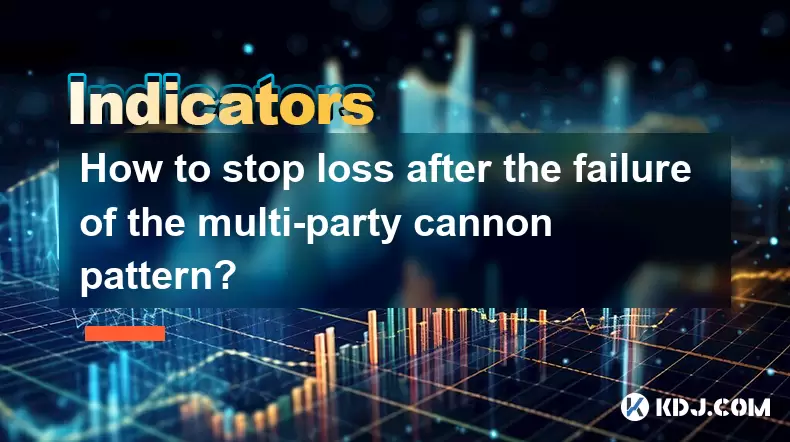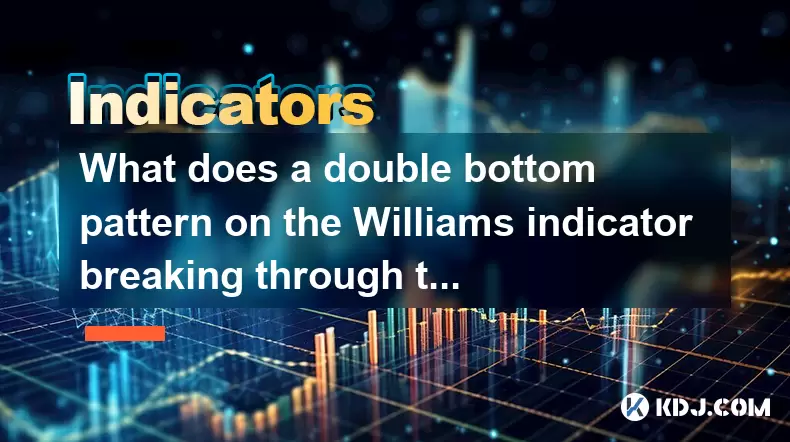-
 Bitcoin
Bitcoin $116400
-0.36% -
 Ethereum
Ethereum $4033
3.40% -
 XRP
XRP $3.302
-1.26% -
 Tether USDt
Tether USDt $1.000
-0.02% -
 BNB
BNB $796.1
1.67% -
 Solana
Solana $177.8
1.89% -
 USDC
USDC $0.9999
0.00% -
 Dogecoin
Dogecoin $0.2314
4.09% -
 TRON
TRON $0.3381
0.14% -
 Cardano
Cardano $0.7989
1.22% -
 Stellar
Stellar $0.4496
-1.84% -
 Chainlink
Chainlink $20.42
9.42% -
 Hyperliquid
Hyperliquid $41.17
0.88% -
 Sui
Sui $3.914
3.77% -
 Bitcoin Cash
Bitcoin Cash $584.7
1.52% -
 Hedera
Hedera $0.2632
-0.54% -
 Avalanche
Avalanche $24.09
3.40% -
 Ethena USDe
Ethena USDe $1.001
-0.02% -
 Litecoin
Litecoin $123.2
1.33% -
 Toncoin
Toncoin $3.318
-0.04% -
 UNUS SED LEO
UNUS SED LEO $8.984
-0.05% -
 Shiba Inu
Shiba Inu $0.00001323
2.85% -
 Uniswap
Uniswap $10.90
4.41% -
 Polkadot
Polkadot $3.999
3.34% -
 Dai
Dai $1.000
0.01% -
 Cronos
Cronos $0.1630
9.64% -
 Bitget Token
Bitget Token $4.484
0.82% -
 Monero
Monero $272.4
2.44% -
 Pepe
Pepe $0.00001173
6.03% -
 Aave
Aave $290.8
2.88%
How to stop loss after the failure of the multi-party cannon pattern?
A failed multi-party cannon pattern in crypto trading signals strong bullish momentum that reverses sharply, often trapping traders and requiring swift risk management adjustments.
Jun 14, 2025 at 03:07 pm

What is the Multi-Party Cannon Pattern in Cryptocurrency Trading?
The multi-party cannon pattern refers to a specific technical analysis formation observed on candlestick charts, typically indicating strong bullish momentum. It is characterized by multiple consecutive large bullish candles (green) with minimal or no upper shadows, suggesting aggressive buying pressure. Traders often interpret this as a sign of continued upward movement. However, when this pattern fails—meaning price reverses sharply after forming the structure—it can trap traders who entered long positions expecting further gains.
Understanding the structure and implications of this pattern is essential for effective risk management. In cryptocurrency markets, where volatility is high, recognizing such patterns and responding swiftly becomes crucial for preserving capital.
Why Does the Multi-Party Cannon Pattern Fail?
A failed multi-party cannon pattern occurs when the expected continuation of bullish momentum does not materialize. Instead of pushing higher, the price action stalls or reverses, often violently. This failure may be triggered by several factors:
- Market manipulation: Large players dumping their holdings at key resistance levels.
- Overbought conditions: RSI or other momentum indicators showing exhaustion.
- False breakouts: Price briefly surges but lacks volume support, leading to a sharp reversal.
Traders should remain cautious when observing this scenario, especially if there are bearish divergence signals on oscillators like MACD or RSI. Recognizing these early signs helps in adjusting stop-loss orders before significant losses occur.
How to Identify a Failed Multi-Party Cannon Pattern?
Identifying a failed pattern involves analyzing both price action and volume behavior following the formation:
- Look for reversal candles such as bearish engulfing, shooting stars, or harami patterns immediately after the multi-party cannon completes.
- Check if subsequent candles close below the previous bullish candles' lows.
- Observe volume: A surge during the cannon pattern followed by a sudden drop or spike on the reversal candle indicates weakness.
These clues help confirm that the bullish momentum has been rejected by the market. Once confirmed, it becomes critical to reassess your stop-loss placement or consider exiting the trade entirely.
Adjusting Stop-Loss Orders After a Failed Multi-Party Cannon
After confirming the failure of the multi-party cannon pattern, the first step is to reevaluate your entry point and current position size. If you're still holding a long position, consider the following adjustments:
- Move your stop-loss above the latest swing high formed during the cannon phase.
- Alternatively, place it just below the high of the last bullish candle before the reversal begins.
- For more aggressive traders, trailing stops based on moving averages or volatility bands can be applied.
These adjustments help protect capital while allowing some room for potential false breakouts. Remember, the goal is to minimize losses, not necessarily to secure profits, since the trend has shown signs of reversal.
Practical Steps to Exit or Hedge Your Position
If the failure becomes more evident—such as a strong bearish candle closing well below the previous support zone—it may be wise to take partial or full profit off the table. Here’s how to proceed:
- Close a portion of the position to lock in any remaining gains or reduce exposure.
- Place a stop-market order slightly below key support levels to automate exit if the price drops further.
- Consider hedging strategies, such as shorting the same asset or using inverse ETFs/crypto derivatives, to offset potential losses.
These steps ensure that even in adverse conditions, you retain control over your risk exposure. Hedging is particularly useful in highly volatile crypto markets where rapid price swings are common.
Frequently Asked Questions
Q: Can the multi-party cannon pattern still lead to a bullish reversal after failing?
Yes, although rare, a failed multi-party cannon pattern can sometimes result in a bullish reversal if strong support zones absorb selling pressure. Monitoring volume spikes and price rejection at key levels can offer clues about potential bounces.
Q: Should I always move my stop-loss after noticing a failed multi-party cannon?
Not necessarily. If the reversal is weak and price remains within a tight consolidation range, holding your original stop-loss might still be viable. Always assess the context of the broader trend before making adjustments.
Q: Is the multi-party cannon pattern reliable across all timeframes?
This pattern tends to be more reliable on higher timeframes such as the 4-hour or daily charts. On lower timeframes like 15-minute or 1-hour, it's more prone to noise and false signals, requiring additional filters for confirmation.
Q: What tools can help confirm the failure of a multi-party cannon pattern?
Tools like RSI divergence, MACD histogram changes, and volume profile analysis are valuable for confirming the failure. Overlaying Fibonacci extensions or pivot points can also provide insights into potential reversal zones.
Disclaimer:info@kdj.com
The information provided is not trading advice. kdj.com does not assume any responsibility for any investments made based on the information provided in this article. Cryptocurrencies are highly volatile and it is highly recommended that you invest with caution after thorough research!
If you believe that the content used on this website infringes your copyright, please contact us immediately (info@kdj.com) and we will delete it promptly.
- Decentralized Data: Taking the Driver's Seat in the Data Economy
- 2025-08-09 14:30:11
- Bitcoin vs. Gold: The Store-of-Value Showdown in the Digital Age
- 2025-08-09 14:30:11
- BlockDAG, Stellar, and Crypto Adoption: Navigating the Hype
- 2025-08-09 14:50:12
- Litecoin Price Surge: Riding the Wave of Institutional Interest and ETF Hopes
- 2025-08-09 14:50:12
- Chainlink's Wild Ride: Whales Are Still Loading Up on LINK!
- 2025-08-09 15:10:11
- Ruvi AI: Solana's New Challenger Dominating Token Sales with AI Innovation
- 2025-08-09 14:55:15
Related knowledge

What does it mean when the Triple Moving Average (TRIX) turns downward but the price doesn't fall?
Aug 09,2025 at 12:42pm
Understanding the Triple Moving Average (TRIX) IndicatorThe Triple Moving Average, commonly known as TRIX, is a momentum oscillator designed to filter...

What does it mean when the Williams' oscillator repeatedly hits bottoms but fails to rebound?
Aug 09,2025 at 09:28am
Understanding the Williams %R OscillatorThe Williams %R oscillator, developed by Larry Williams, is a momentum indicator used in technical analysis to...

What does it mean when the upper and lower Bollinger Bands narrow?
Aug 09,2025 at 03:00pm
Understanding Bollinger Bands in Cryptocurrency TradingBollinger Bands are a widely used technical analysis tool in the cryptocurrency market, develop...

What does it mean when the 5-day moving average crosses the 10-day moving average but the 20-day moving average remains upward?
Aug 09,2025 at 03:35pm
Understanding Moving Averages in Cryptocurrency TradingMoving averages are foundational tools in technical analysis, especially within the cryptocurre...

What does a double bottom pattern on the Williams indicator breaking through the 50-day midline indicate?
Aug 09,2025 at 10:56am
Understanding the Williams %R IndicatorThe Williams %R indicator, developed by Larry Williams, is a momentum oscillator that measures overbought and o...

What does it mean when the MACD-histogram turns from green to red but the DIF line fails to form a golden cross?
Aug 09,2025 at 10:15am
Understanding the MACD and Its ComponentsThe MACD (Moving Average Convergence Divergence) is a widely used technical analysis tool in the cryptocurren...

What does it mean when the Triple Moving Average (TRIX) turns downward but the price doesn't fall?
Aug 09,2025 at 12:42pm
Understanding the Triple Moving Average (TRIX) IndicatorThe Triple Moving Average, commonly known as TRIX, is a momentum oscillator designed to filter...

What does it mean when the Williams' oscillator repeatedly hits bottoms but fails to rebound?
Aug 09,2025 at 09:28am
Understanding the Williams %R OscillatorThe Williams %R oscillator, developed by Larry Williams, is a momentum indicator used in technical analysis to...

What does it mean when the upper and lower Bollinger Bands narrow?
Aug 09,2025 at 03:00pm
Understanding Bollinger Bands in Cryptocurrency TradingBollinger Bands are a widely used technical analysis tool in the cryptocurrency market, develop...

What does it mean when the 5-day moving average crosses the 10-day moving average but the 20-day moving average remains upward?
Aug 09,2025 at 03:35pm
Understanding Moving Averages in Cryptocurrency TradingMoving averages are foundational tools in technical analysis, especially within the cryptocurre...

What does a double bottom pattern on the Williams indicator breaking through the 50-day midline indicate?
Aug 09,2025 at 10:56am
Understanding the Williams %R IndicatorThe Williams %R indicator, developed by Larry Williams, is a momentum oscillator that measures overbought and o...

What does it mean when the MACD-histogram turns from green to red but the DIF line fails to form a golden cross?
Aug 09,2025 at 10:15am
Understanding the MACD and Its ComponentsThe MACD (Moving Average Convergence Divergence) is a widely used technical analysis tool in the cryptocurren...
See all articles

























































































